Aardvarks are often called anteaters, because they do eat termites and ants, but they are more closely related to the elephant. They have the long snouts, and tongues in common with the anteater, but they have long, donkey-like ears, long rear legs that give them a humped back and tails more like a kangaroo. They can weigh between 90-145 pounds and have very sparse coarse hair and a skin so tough that they have been known to sleep in an ant’s nest.

Aardvarks and Anteaters
by Ragtimelil
Aardvarks are often called anteaters, but they are only distantly related to the true South American anteaters. Both animals are unique creatures in the animal world.
Aardvarks
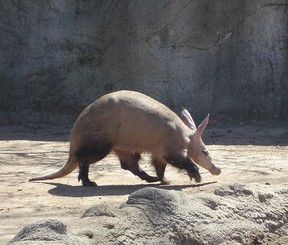
Aardvarks are native to the sub Sahara regions of Africa. Paintings of aardvarks found in Egypt suggest that they may have lived there at one time too. They are also called ant bear or earth pig due to their shape. Some people do hunt and eat aardvarks.
They have long spade shaped claws and are strong burrowers. Many animals take advantage of tunnels made by aardvarks that were abandoned
Image Source File:Porcs formiguers (Orycteropus afer).jpg
.
Habits and Babies
 Aardvarks are primarily nocturnal although they may be found sunning themselves in the mornings near their burrows. They do not have the greatest eyesight and depend on their senses of hearing and smell. When evening comes, they emerge from their dens and stand still for a few moments to listen for danger. Then they spring forward and stand still again. They repeat this until they are satisfied that it is safe to trot off with nose to the ground smelling for insects. They can cover six miles a night searching for insects and consume up to 50,000 insects in one day.
Aardvarks are primarily nocturnal although they may be found sunning themselves in the mornings near their burrows. They do not have the greatest eyesight and depend on their senses of hearing and smell. When evening comes, they emerge from their dens and stand still for a few moments to listen for danger. Then they spring forward and stand still again. They repeat this until they are satisfied that it is safe to trot off with nose to the ground smelling for insects. They can cover six miles a night searching for insects and consume up to 50,000 insects in one day.
Baby aardvarks are usually born singly and weigh only about four pounds. The baby will stay in the burrow for about two weeks when it is ready to join its mother on foraging expeditions. At three months the baby can eat solid food and at six months can dig its own burrows. At this time males will go off on their own, but females may stay with their mothers until the next baby is born.
The adult has poor vision and is notoriously clumsy and can accidentally injure the baby. Some zoos have built special nesting enclosures and keep a twenty-four hour vigil until the baby is old enough to tolerate bumps by the adults. They can live to be about 23 years old in captivity.There's a web site with pictures of all sorts of zoo babies including aardvarks.
The South American Anteaters
The South American anteaters are related to the sloth and the armadillo. All except for the giant anteater have prehensile tails.
The giant anteater or ant bear is six to over seven feet in length and weighs 60 to 90 pounds They are mostly solitary and travel in the savannahs as well as the rain forests. Mothers carry their babies on their backs until they are weaned.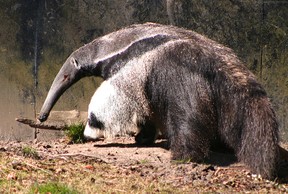
They have no teeth and limited jaw movement. They collect ants and termites on their rough tongue with sticky saliva. The anteater's stomach works like a bird’s gizzard, grinding its food with the aid of small amounts of sand and rocks.
While not normally aggressive, they can do some real damage with their strong front legs and claws. They walk on their front knuckles with most of the weight on the outside of the foot so that they can fold their claws up and out of the way.
Photo by Malene Thyssen
The Tamandua
There are two genuses of the small Tamandua - the Northern and the Southern. They range from Mexico to Central and South America and are sometimes used to rid a house of ants and termites. They are sometimes killed by hunters who claim they kill their dogs. 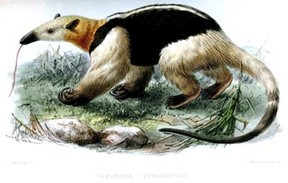
Tamanduas are semi arboreal and grow to be 20 to 35 inches long with an additional tail length of 16 to 23 inches They weigh between 4 to 15 pounds and live up to nine years. They are thought to nest in shallow burrows or in trees. In fact, they are very clumsy on the ground unlike their cousin, the giant anteater.
Image in the Public Domain
The Silky Anteater
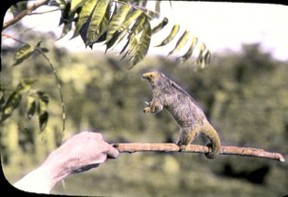 The Silky or Pygmy anteater is native to the south of Mexico to South America. They are the smallest living anteaters weighing 6 to 14 ounces and only 6 to 9.5 inches long including the tail. The are not only nocturnal but arboreal and.live in canopied forests where they can move around without having to descend to the ground. They sleep curled in a ball in the branches of the trees and are very hard to spot during the day.
The Silky or Pygmy anteater is native to the south of Mexico to South America. They are the smallest living anteaters weighing 6 to 14 ounces and only 6 to 9.5 inches long including the tail. The are not only nocturnal but arboreal and.live in canopied forests where they can move around without having to descend to the ground. They sleep curled in a ball in the branches of the trees and are very hard to spot during the day.
Image in the Public Domain
You might also like
Texas Wild Cats and Black PanthersI just met someone who swears he sees black panthers around his house. I had ...
The Mystery Predators of BritainOr Alien Big Cats. Wild cats that exist in countries where they are not usual...
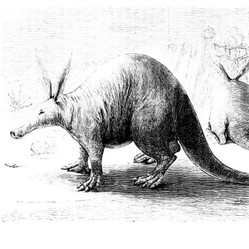











 How I Found My Free Family History Programon 09/05/2013
How I Found My Free Family History Programon 09/05/2013
 Finding a Graveon 09/01/2013
Finding a Graveon 09/01/2013
 Do Border Collies Make Good Pets?on 08/11/2013
Do Border Collies Make Good Pets?on 08/11/2013
 Hubert Patey - an Indentured Servanton 08/02/2013
Hubert Patey - an Indentured Servanton 08/02/2013

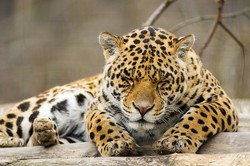
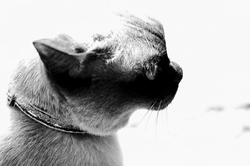
Any Aardvark tales?
ha. That's my trick.
Wow, Thanks.
Oops, sorry, forgot to hit the subscribe button ;-( to this article ;-(
Great article pinned! to the pets-pets Wizzley community board http://pinterest.com/wizzley/pets-pets/ ! ;-) SY
It was the one with Samuel Johnson and the dictionary. BlackAdder had to rewrite the whole thing, only to learn that he'd forgotten aardvark. Hilarious stuff!
LOVE the Black Adder series - Don't remember that episode though.
Had a new postmaster who started in my small NH town. It was all I could do to keep from laughing, he looked exactly like Black Adder/Mr. Bean. I wasn't the only one either.....hahahaha
That ceiling light pull is so cute!
Whenever I think of aardvarks, I think of that BlackAdder episode. Have you ever watched that?